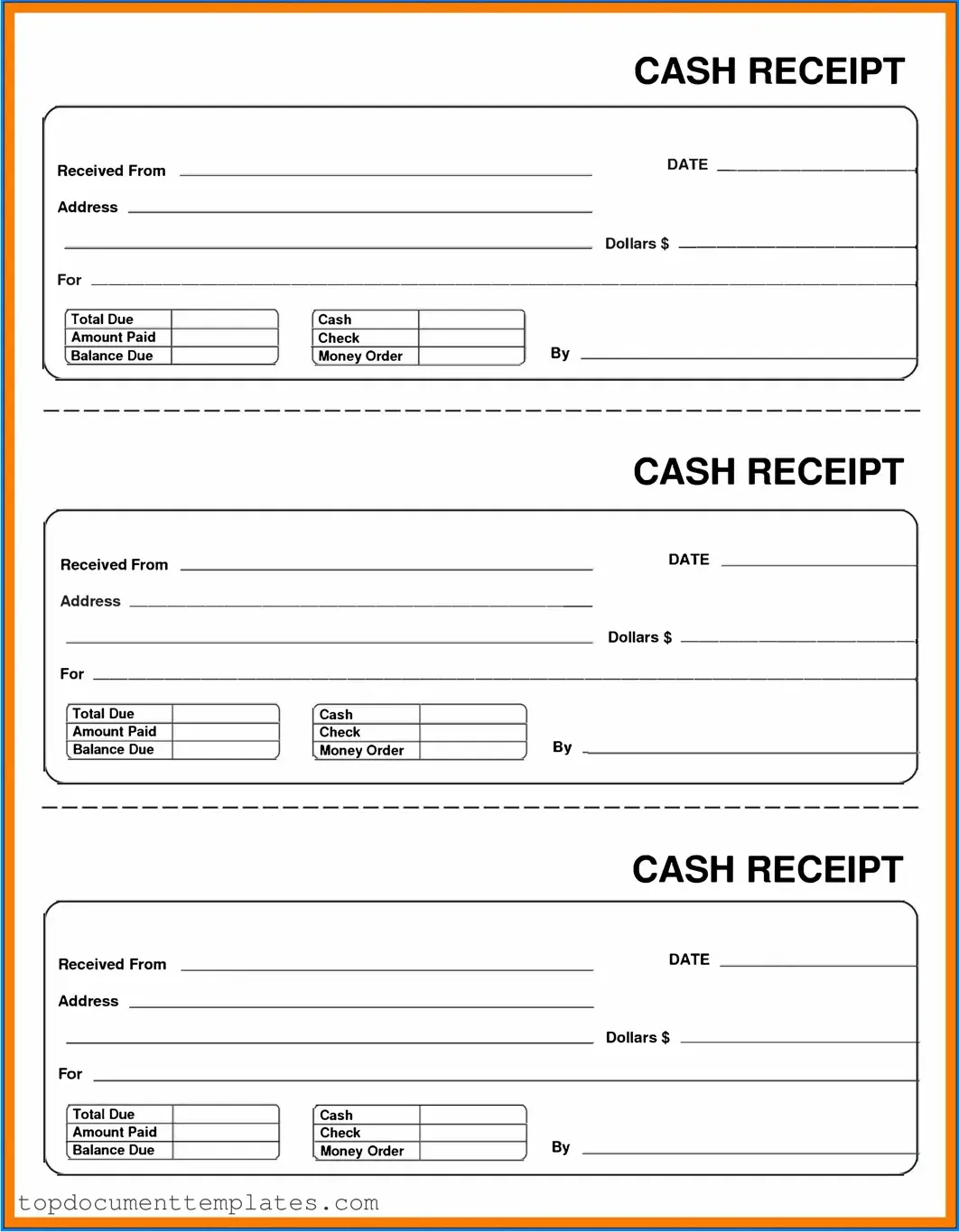The Cash Receipt form plays a crucial role in financial transactions, serving as a vital record for both businesses and customers. This form documents the details of cash payments received, ensuring transparency and accountability in monetary exchanges. It typically includes essential information such as the date of the transaction, the amount received, the name of the payer, and the purpose of the payment. Additionally, the form may contain a unique receipt number for tracking and reference purposes. By providing a clear and organized way to record cash transactions, the Cash Receipt form helps businesses maintain accurate financial records and supports effective auditing processes. Understanding its components and proper usage is essential for anyone involved in managing finances or handling cash transactions.
